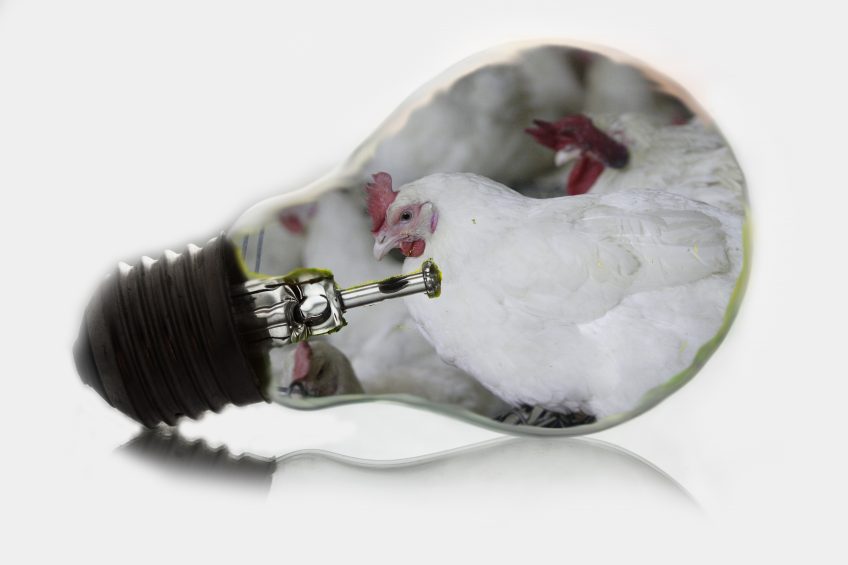Innovations in poultry lighting explored

Dr Ian Rubinoff, Hy-Line International technical services veterinarian, spoke this week at the International Egg Conference (IEC), in Bruges, about choosing the right lighting for your poultry.
Poultry have far wider vision of light than humans and respond well to a range of artificial light environments.
Humans have poor vision compared to other animal species, relying on other senses, while chickens are sensitive to red, green, blue and ultraviolet colours on the lighting spectra.
While humans respond to light from around 400-750nm, chickens can see from 315-400nm to 750nm. Chickens are more sensitive to red and blue spectra with additional peaks of light sensitivity around 480nm and 630nm.
What light makes pullets grow faster or boost egg production?
Chickens detect light not only through the retinal cone receptors in the eyes but also via extra retinal photoreceptors in the pineal gland and the hypothalamic gland.
Dr Rubinoff said there was good evidence that cool lighting (4000-6000K) with a more blue-green colour was ideal for pullets, helping them grow faster, while warm lights (<3,000K) with a more red-orange colour spectra boosted egg production.
Changing from blue-green to red-orange as the hens began laying was generally not an issue, as long as the same type of lighting was used, he added.
The right lighting for poultry houses
Dr Rubinoff said choosing the right type of lights for poultry houses was important but the industry was still learning. In stacked deck/belted houses for cage and colony birds, he advocated an even light distribution at all levels.
There should be a low angle of distribution <150 degrees. There should be light in the feed troughs and it was fine if the cages were darker. He suggested using a tube light emitting diode (LED) system in a 6 x 6 layer house.
Aviary lighting
In an aviary, Dr Rubinoff suggested a more flexible lighting system, with the ability to dim and independently control different lines of light. There should be no dark areas under the system and aisle lights were usually needed to be broad distribution lights.
Also read: Best practices to achieve the best protection – “The lights should be dimmed as much as possible to settle the birds.
Barn lighting
For a barn system, even lighting was required across the unit, particularly over the scratch areas and there should be an ability to dim when required.
Many different light sources were used across the industry, he added, ranging from open houses under the influence of the sun to more advanced layer houses without exterior light influence.
Benefits of LED light bulbs
But he said LED light bulbs were often beneficial as they provided a full light spectrum, were the most efficient light bulb, did not emit heat, could be designed to focus the light on desired areas and were easier to dim than compact fluorescent (CFL) bulbs.
LED bulbs have a very long lifespan – up to ten year at 16 hours a day, providing light for between 50-60,000 hours.
“People are concerned about costs but I would encourage you to switch from incandescent bulbs to LED bulbs because the return on investment is less than a month,” he stressed.












